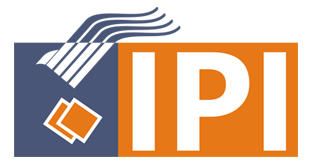Pengembangan Bahan Ajar Matematika Berbasis Buku Fabel Berkarakter Untuk Siswa SMP
(1)
(2)
(*) Corresponding Author
Abstract
Keywords
Full Text:
PDFReferences
Depdiknas. Materi Sosialisasi dan Pelatihan Kurikulum Tingkat Satuan Pendidikan (KTSP). Jakarta: Depdiknas, 2007.
Hamdani. Strategi Belajar Mengajar. Bandung: Pustaka Setia, 2011.
Aunurrahman. Belajar dan Pembelajaran. Bandung: Alfabeta, 2010.
P. Knapp & M. Watkins. Genre, Text, Grammar, Teching and Assessing Writing. Australia: University of New South Wales Press, 2005.
F. Muin. Pendidikan Karakter Konstruksi Teoritik & Praktik. Jogjakarta: Ar-Ruzz Media, 2011.
Sugiyono. Metode Penelitian Pendidikan (Pendekatan Kuantitatif, Kualitatif, dan R&D). Bandung: Alfabeta, 2012.
D. Narvaez. Moral Text Comprehension: Implications for Education and Research. University of Notre Dame, USA: Journal of Moral Education, Vol. 30, No. 1, 43-54, 2001.
D. J. Tharinger. Providing Psychological Assesment Feedback to Children Trough Individualized Fables. Profesional Psychology: Research and Practice, Vol. 39, No. 6, 610-618, 2008.
E. M. Stefany. Respon Siswa Pada Pengembangan Media Pembelajaran: Implementasi Pada Mata Pelajaran TIK Kelas VIII di SMP Negeri 4 Denpasar. Jurnal Ilmiah Edutic. Vol.2 No.2, 2015.
S. E. Smaldino, D. L. Lowther, & J. D. Russell. Teknologi Pembelajaran dan Media untuk Belajar. Jakarta: Kencana, 2012.
A. Arsyad. Media Pembelajaran. Jakarta: Raja Grafindo Persada, 2014.
DOI: http://dx.doi.org/10.30998/sap.v3i3.3588
Refbacks
- There are currently no refbacks.
Copyright (c) 2019 Dwi Oktaviana, Iwit Prihatin

This work is licensed under a Creative Commons Attribution-NonCommercial-NoDerivatives 4.0 International License.
SAP (Susunan Artikel Pendidikan) indexed by:






Ciptaan disebarluaskan di bawah Lisensi Creative Commons Atribusi 4.0 Internasional.
View My Statis



 Accredited Certificate
Accredited Certificate
 Tamplate Journal
Tamplate Journal




















